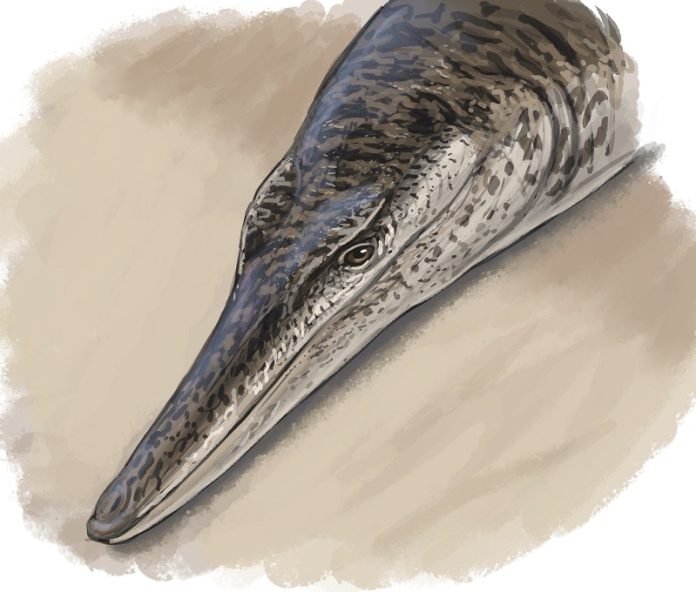
An international team of scientists from Germany and the UK has made an exciting discovery: a new species of ancient marine crocodile named Enalioetes schroederi.
This remarkable creature lived around 135 million years ago during the Cretaceous Period, in the shallow seas that once covered much of what is now Germany.
Enalioetes schroederi belonged to a group of marine crocodiles called Metriorhynchidae, known for their unique, dolphin-like body shape.
Unlike modern crocodiles, metriorhynchids had smooth, scaleless skin, flippers instead of legs, and a tail fin that helped them swim swiftly through the water.
These adaptations made them highly efficient predators, capable of catching fast-moving prey like squids and fish. Some species even had large, serrated teeth, suggesting they may have hunted other marine reptiles.
While metriorhynchids were most common during the Jurassic Period, their fossils are much rarer from the Cretaceous.
The discovery of Enalioetes schroederi is particularly significant because it comes from a well-preserved, three-dimensional skull, making it the best-preserved metriorhynchid from the Cretaceous period.
This level of preservation is unusual and provides valuable insights into the anatomy of these ancient marine reptiles.
Sven Sachs, a researcher at the Naturkunde-Museum Bielefeld and the leader of the project, explained the importance of the find. “The specimen is remarkable because it is one of the very few metriorhynchids known from a three-dimensionally preserved skull.
This allowed us to use CT scanning technology to examine the internal anatomy of the animal, including the inner ear structures, which can tell us a lot about its behavior and lifestyle.”
Dr. Mark Young from the University of Edinburgh added that Enalioetes schroederi helps scientists understand how these marine crocodiles continued to evolve during the Cretaceous Period.
“During the Jurassic, metriorhynchids developed a body plan that was very different from other crocodiles—flippers, a tail fin, the loss of bony armor, and smooth skin.
These changes helped them adapt to a marine lifestyle. Enalioetes shows us that this trend continued into the Cretaceous, with even larger eyes and more compact inner ears, suggesting it was probably an even faster swimmer.”
The history of the Enalioetes schroederi specimen is as fascinating as the creature itself.
The skull and the first neck vertebrae were discovered over a hundred years ago by a German architect named D. Hapke in a quarry near Hannover. Initially studied by Henry Schroeder of the Prussian Geological Survey, the specimen was thought to have been lost during World War II.
However, it was later rediscovered in the Minden Museum in Western Germany, where it had been kept by the finder’s family after the war. The species was named after Henry Schroeder, who provided the first description of the fossil.
By comparing the fossil with others from museum collections, Sachs and his team confirmed that Enalioetes schroederi was indeed a species new to science.
This discovery offers a fascinating glimpse into the life of marine crocodiles during the Cretaceous and helps fill in the gaps in our understanding of ancient marine ecosystems.



